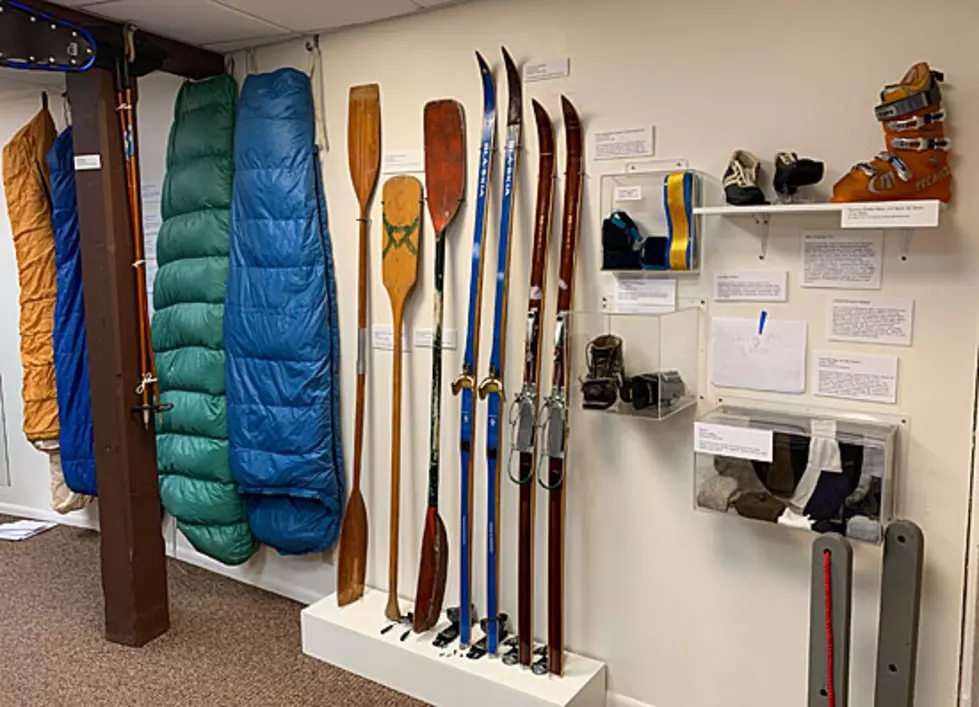
UM students present outdoor gear exhibit at Historical Museum at Fort Missoula
Handcrafted snowshoes, wooden skis and handmade sleeping bags may be relics of our recreational past. Still, our aged outdoor gear plays an important role in the technological advancement and culture of those who live and play in the mountains, according to University of Montana students.
The public is invited to attend an opening reception from 6 to 8 p.m. Friday, Jan. 25, for a new exhibit at the Missoula Historical Museum at Fort Missoula. The exhibit, “Outdoor Gear Stories from the Treasure State: 75 Years of Outdoor Recreation History,” features stories, interviews and photographs about the outdoor gear that has accompanied Montana recreationalists for more than seven decades. Free and open to the public, the exhibit will be displayed through April 21.
“Relics of the past 50 to 75 years of outdoor recreation history are the precursors to the things we wear on an everyday basis now,” said Dr. Rachel Gross, a postdoctoral Teaching, Research and Mentoring Fellow in UM’s Davidson Honors College. “I think this exhibit will be valuable for people interested in the evolution of technology, as well as the overall meaning western people attach to gear.”
Gross added that the exhibit provides insight into gear that has kept outdoor enthusiasts warmer, lighter, drier and safer across varying landscapes, activities and conditions.
Undergraduate and graduate students enrolled in the University’s Natural Resource Science and Management 291 and History 391 classes, in addition to student researchers in the DHC, spent a year organizing the exhibit. They collected donated equipment from the public used for everything from hunting to mountain climbing. Students also conducted oral history interviews “for greater perspective into the outdoor culture revered by Missoula and the UM community,” said Victor Yvellez, a UM student and exhibit organizer.
Gear stories include a Chouinard ice axe bought directly from Patagonia founder Yvon Chouinard; lightweight custom boots designed by Royal Robbins leather, which are no longer manufactured; and handmade down vests and sleeping bags from the late 1960s, made from kits not sold since the 1970s.
Sally Wright, who donated gear to the exhibit, made down sleeping bags in the 1960s for her family, which she said was an affordable alternative at the time.
“Some of the nights were cold, and it was nice to have a down sleeping bag,” Wright said. “Sleeping bags were always about $200 dollars even in the late 1960s, and that was a lot of money.”
For decades, students and faculty seeking access to outdoor recreation during their tenure at UM has been part of the allure of the University, according to event organizers. Gross said that particular aspect of UM is important to highlight.
“Looking at material objects is a really good way to get at much bigger stories about people’s relationships to their community, to the region and their ideas about consumer culture,” she said.
Gross and UM students will share stories from the exhibit at the Montana Historical Society in Helena on Saturday, Feb. 9. The exhibit is supported by the Wilderness Institute, the Governor’s Office of Outdoor Recreation, UM’s Davidson Honors College, the DeMers-Price History Fund, the UM Department of History, the Missoula Public Library and the Historical Museum at Fort Missoula.
